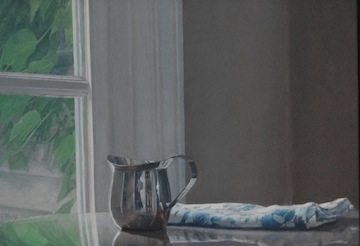Mindfulness
For a two-artist show that opened last night at Oxford Gallery, where I’m exhibiting 26 paintings, along with a lot of tremendous work by Brian O’Neill, I printed two catalogs, one for me and one for him. I wrote a brief introduction for it, in which I tried to distill as clearly and succinctly as I could, why I paint. I’ve done this a number of time over the past five years, when an artist statement has been solicited for one exhibit or another. This time, I felt as if I came closer than I have in the past:
Painting, for me, is a non-conceptual way of apprehending life. It’s a philosophical stance as much as an aesthetic pursuit. In the process of making a representation of something, the world becomes a part of me in a way that rational thinking can’t achieve. Painting requires me to pay dispassionate attention to the way things are without any motive other than to be aware of them and share that awareness through paint. For me, that kind of mindfulness is entirely different from knowledge and intelligence. Painting isn’t about thinking or knowing. It’s about seeing what’s there; nothing more, but when it works you see more than what’s there as well. A good painting offers the viewer, subconsciously, an holistic glimpse of the world, not conscious information about some small part of it. A painting can function the way the taste of the pastry dipped in tea functioned for the narrator of Proust’s Remembrance of Things Past. In other words, it can summon an entire world from a simple act of perception. That kind of apprehension can offer pleasure, if the work is good, but that isn’t the purpose. It offers a calm state of impartial awareness—a glimpse into the way things are, in a way not accessible to conscious thought—and that kind of attention isn’t something highly esteemed in this contentious contemporary world. In that sense, a painting is a kind of meditation, for the one who makes it and the one who looks at it.

Comments are currently closed.